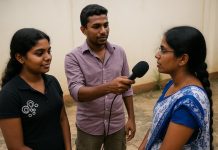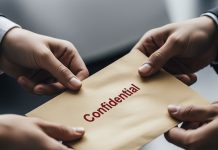
Fake news is not new, it’s been around for thousands of years but the speed and ability for anyone to share text, videos and images has made dealing with fake news more difficult.
Throughout history there have always been attempts to fool and confuse the public while distracting attention from the truth.
However, in recent years disinformation has become much more widespread, and it constitutes a direct challenge to honest, truthful reporting. So what should journalists do about it?
Fojo Media Institute has an excellent free resource called Fojo Check containing tools for journalists wanting to brush up their skills in fact-checking.
We spoke to a range of experts involved in training journalists, and we asked them how to spot fake news and deal with it. Responses listed alphabetically.
Annelie Frank, the project manager for Fojo’s fact-checking hub Faktajouren says many know about fake news’, but not many understand what it is.
“It’s not news, because news tells us what’s really happened even if mistakes occasionally are made. I don’t think a lot of people fall for fake news on fake news sites nowadays. The public has been educated on source criticism and on how the media works. The former US president has practically kidnapped the term with his attacks on traditional media. Fake news is not the big problem. But disinformation is a greater threat. These kinds of stories contain quite a lot of truth. A government decision can be described correctly, but relevant information will be left out and thereby the big picture is muddled.”
Associate Professor Dr. Dinh Thi Thuy Hang – Director, Center for Further Training of Professional Journalists (VJTC), Vietnam Journalists Association (VJA)
“In 2021 the VJTC conducted five training workshops for journalists in identifying and checking fake news, disinformation and misinformation.
“Fake news often appears on social networks. They have catchy and often shocking headlines to attract attention. As an internet user, I often read through the information, then look at the link (URL).
“Misinformation often comes from fake news websites which are created to appear almost identical to the original websites.
“When in doubt I cross check the date and the event to see if the information is published on other newspapers or news sites. If the news is discussed by other sources, such as mainstream newspapers, there’s a high chance that news is true. However, for journalists, they still need to verify the information with sources to gather evidence in order to confirm that the news is accurate.
“When I find misinformation being spread, I often post on my family’s and friend’s groups on social media to tell them that the information being shared is fake and that they shouldn’t believe it or circulate it. However some people still circulate misinformation even though they are suspicious of the information being shared via social media links.”
Sanjoy Hazarika is a former reporter for the New York Times, author and documentary filmmaker. He is co-convenor of the South Asia Media Defenders Network (SAMDEN) and currently Director of the Commonwealth Human Rights Initiative (CHRI). He is the founder of the Centre for North East Studies and Policy Research (C-NES).
“I encourage journalists to access well-known resources and organizations which flag, challenge and disseminate information about fake news and their media handles. Every major country has a few dedicated persons focusing on these critical issues. In addition, the answer to fake news is to place the facts on any issue in the public domain.
“Another way — slower than getting a news break from a reliable source but reliable — is to use freedom of information/right to information laws which exist in many parts of the world.
“Journalists have won national and international awards by anchoring their reporting about key government issues of public concern on right to information (RTI) requests. RTI has become an important tool for media to investigate official wrongdoing. The facts can’t be disputed because they come from the original source: the relevant government department.”
Naomi Goldsmith – journalism trainer and media consultant
“I personally think there is no such thing as ‘fake news’. If the information is fake, then it’s not news.
“News, of course, should always be accurate, and where there is uncertainty or controversy – this should be made clear.
“There are people who knowingly or mistakenly create or pass on information which is not accurate, and this can more precisely be referred to as disinformation and misinformation.
“Disinformation – like dishonest – means it’s deliberately false. Misinformation – like mistake – means there wasn’t a deliberate intention to create or pass on false or misleading information. It was a mistake.”
(Naomi has written a longer piece for this site about dealing with disinformation and misinformation).
Jaldeep Katwala – writer and journalist
“Look at the source. Is it an organisation you trust? If the information comes to you via social media from a friend of a friend or someone you vaguely know, be particularly suspicious.
“Does it sound credible? Are the sources quoted recognised and traceable?
“Beware of opinions masquerading as facts. Always ask what is this person’s perspective and ask if they are trying to support an outrageous statement with partial or unlikely facts.
“Journalists are gatekeepers of information. We check the validity of what we are told and then share it with the audience once we are sure it is accurate, honest and truthful.
“Sometimes journalists fail in this regard, so information published by other news outlets also needs to be tested.
“If you’re not sure that information is correct don’t pass it on. Be subjective but don’t be obsessive.
“In your work as a news gatherer be sure to cast your eyes and ears widely in an attempt to include multiple perspectives. Don’t limit yourself to a personal echo chamber cut off from the real world and other points of view.
“Keep an open mind, listen to diverse opinions, and always check and double check all the information you come across before passing it on to those who turn to you for reliable information.”
Richard Sambrook – former Emeritus Professor of Journalism at Cardiff University
“Fake news is a phrase used to cover many different sorts of problems – and sometimes used to undermine legitimate journalism. Basically there is misinformation – information which is unintentionally wrong and simply needs correcting – and disinformation, which is deliberately wrong and intended to mislead.
“The problem of disinformation isn’t going to go away. The tools of disinformation are getting more sophisticated. For example, artificial intelligence can now manipulate audio and video to make it appear people have said things they have not said.
“So how can you spot Fake News? Ask some basic questions:
-
- Who is saying this? Is the source clear and are they who they say they are (e.g. is the website url genuine?)
- Where are other voices, views and sources on this topic? If there are none – be suspicious.
- Why are they saying this? Is it to inform? persuade? entertain? educate? Or might it be to mislead?
- When was this said? Is it contemporary or is it a picture or quote taken out of context from the past to mislead about a current issue?
“When misinformation or disinformation is found, it needs to be corrected. But that alone may not be enough. In the end, serious journalists need to commit to high standards of accuracy, fairness, providing evidence, reporting a range of views and being open about their purpose and accountable if mistakes get made. Openness and transparency are the best means of winning trust.
“Understanding fake news and verification techniques are built into core journalism modules at Cardiff University.”








